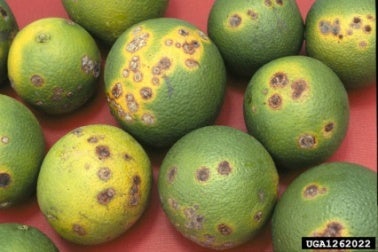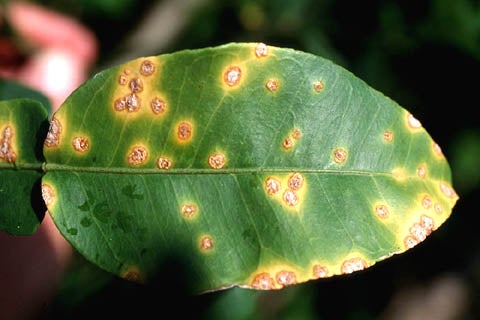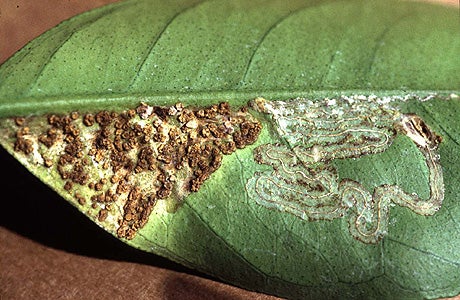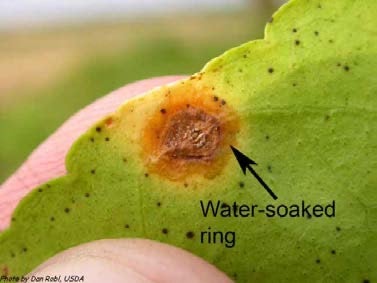Master Gardeners: Citrus Canker can live up to 10 months on leaves
Published 12:26 am Saturday, April 25, 2020
|
Getting your Trinity Audio player ready...
|
By Sheri Bethard
Texas Certified Master Gardener, Orange County Master Gardeners
This is the second of two articles discussing Citrus Greening and Citrus Canker. Last week I went over Citrus Greening and this week I will cover Citrus Canker.
As a reminder, they are two diseases which attack the citrus family. Both are currently in Texas and other states along the Gulf Coast including South Carolina and the Los Angeles area. To control these diseases the counties in which these diseases have appeared are currently quarantined. Texas counties under quarantine closest to us are Harris, Montgomery, Galveston, Brazoria and Fort Bend. Additional counties along the coast and also the Rio Grande Valley area are included. Within the quarantine areas all home-grown citrus must be consumed within the area and home-grown citrus plants cannot be transported outside of the quarantined area.
Commercial citrus businesses, Internet shippers and roadside vendors within the State of Texas should be able to prove they are in compliance with the federal and state quarantine guidelines. Before you buy, make sure they are in compliance and the citrus was not from a quarantined area.
Citrus Canker is an incurable bacterial disease that causes lesions on the leaves, stems and fruit of citrus plants and other plants in the citrus family. It is not harmful to humans. It is highly contagious and can be spread rapidly by wind-driven rain, equipment, people carrying the infection on their hands and clothing or moving infected plants or plant parts (fruit, leaves or stems). Long distance spread occurs through the movement of infected plants of plant parts including nursery trees and propagation material (budwood, rootstock seedlings and budded trees). Hurricanes and severe weather events of strong winds and rain can spread Citrus Canker long distances. The bacteria may survive up to 10 months in lesions on living citrus plants. There is NO CURE for this disease!
The pathogen flourishes under moist and warm conditions and enters the host plant thru the leaf pores and wounds such as those caused by leaf miners. Seven to 10 days following entering the plant a pinpoint lesion becomes visible as raised or ‘pustular’ on both leaf surfaces, but mostly on the lower side. They develop a yellow halo with water-soaked margins, becoming corky and crateriform, with a raised margin and sunken center. Leaf lesions are usually about 1/16” – ½” across. Leaves and young green stems are vulnerable to the infection. Trees can survive for long periods with diseased plant tissues, which cause discoloration of the bark.
Since there is no cure for Citrus Canker, prevention is the best approach to managing both.
- Do not purchase plants, fruit, budwood, rootstock seedlings or budded trees from quarantined areas and transporting it out of that area.
- Purchase certified plants by buying plants, budwood, and seedlings only from Texas Department of Agriculture-certified citrus nurseries.
- Use good sanitation practices to reduce potential disease spread. Practice general cleanliness and use alcohol-based sanitizers, bleach solution, and antibacterial soap solutions to decontaminate equipment and tools and reduce the risks associated with human and mechanical transmission of the diseases.
- If you suspect that a citrus plant has Citrus Canker or Citrus Greening, report the tree to TDA at (800) 835-5832 or online at http://www.citrusalert.com/report-a-tree for further assistance.
- Remove and destroy diseased plants to eliminate potential bacteria for future infections.
- Monitor nearby citrus plants. If new infections appear, take action swiftly. TDA regulations require disposal of infected tree and plant material by burning or bagging and burying it at least 2 feet deep at a municipal landfill.
For more information on Citrus Canker check out
https://agrilifeextension.tamu.edu/library/gardening/citrus-canker/ Or you can contact Texas A&M AgriLife County Extension office – Orange County 409 882-7010 or the Texas Dept. of Agriculture at www.texasagriculture.gov or call (877) 542-2474.
I hope you have found the articles the past two week informative and I will try to include more articles along these areas in the coming months.
If you have a suggestion for an article, please visit the Contact area of our website https://txmg.org/orange or go on our Facebook page Orange County Texas Master Gardeners and let us know.









